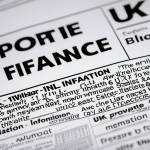Gender Inequality in UK Sports
Gender inequality in UK women’s sports remains a significant issue, manifesting in disparities in recognition, opportunities, and participation rates. Female athlete discrimination stems from long-standing historical contexts that have shaped the sports landscape. Historically, women’s involvement in competitive sports was limited by social norms and lack of institutional support, which continues to influence present dynamics.
Recognition disparities are evident as female athletes often receive less media attention and fewer sponsorship opportunities than their male counterparts. Participation rates in grassroots and professional levels are also lower for women, partially due to unequal access to facilities and resources. This lack of equal opportunity perpetuates the cycle of gender inequality.
Also read : How Does British Sport Influence Global Cultures?
Recent efforts to address these issues include increasing funding for women’s sports programs and initiatives aimed at improving visibility for female athletes. Governing bodies and advocacy groups are working to reform practices and challenge stereotypes. Despite progress, female athlete discrimination remains entrenched, requiring sustained commitment to achieve true equality in UK sports. Understanding these inequalities helps in framing effective strategies for change and highlights the resilience of female athletes navigating these challenges.
Funding Disparities and Financial Barriers
Small text
Also to see : What is the role of technology in modernizing UK sports training?
Sports funding gap between male and female athletes in the UK remains a core barrier to equality. Despite increasing attention to UK women’s sports, financial support allocated to female athletes is consistently lower than for male counterparts, affecting all levels from grassroots to elite competition. This funding imbalance limits access to quality training, state-of-the-art facilities, and professional coaching, which are crucial for athlete development and career longevity.
The disparity in funding directly impacts female athletes UK, as fewer sponsorship deals and less prize money create economic challenges, making sport a less viable career choice. For example, studies reveal that women’s teams often receive a fraction of the resources that men’s teams do, impeding competitiveness and growth.
Recent initiatives attempt to address this gap, with governing bodies increasing budgets earmarked for UK women’s sports. However, progress is gradual and inconsistent across disciplines. Increased transparency in funding allocation and targeted financial programs are essential to overcome these entrenched barriers and empower female athletes to thrive without financial constraints.
Gender Inequality in UK Sports
Small text
Gender inequality in UK women’s sports manifests prominently through persistent female athlete discrimination in multiple dimensions: recognition, opportunities, and participation rates. Historically, social and institutional barriers limited women’s access to competitive sport, setting a precedent that influences today’s disparities.
Recognition gaps remain substantial; female athletes are often overshadowed in media and public discourse, impacting their visibility and endorsement opportunities. This lack of exposure restricts pathways to wider support and resources that male athletes more readily obtain. Participation rates in UK women’s sports continue to lag behind men’s, fueled by unequal access to quality training, facilities, and development programs.
Efforts to reduce gender inequality include initiatives to boost funding and media attention, alongside advocacy campaigns targeting stereotypes and entrenched norms. These measures aim to create equitable opportunities, increase grassroots engagement, and highlight female athletic achievements.
Addressing female athlete discrimination requires sustained, structural change. This involves reforming sports governance, improving access to resources, and promoting cultural shifts that value women’s sports equally. Progress is evident but uneven, underscoring the complex legacy and ongoing challenge of achieving true equality in UK sports.
Gender Inequality in UK Sports
Small text
Gender inequality in UK women’s sports is deeply rooted in historical contexts that continue to shape current realities. Female athlete discrimination emerges through significant disparities in recognition, opportunities, and participation rates. Historically, social norms restricted women’s involvement in sports, creating a legacy of limited support and visibility compared to men.
Recognition disparities remain stark. Female athletes often receive less media attention, reducing their opportunities for sponsorship and public endorsement. This underrepresentation perpetuates a cycle where UK women’s sports struggle to garner equivalent financial and institutional backing.
Opportunities for participation are likewise affected. UK female athletes frequently face restricted access to quality training, coaching, and competitive platforms, resulting in lower participation rates at both grassroots and elite levels. These barriers hamper development pathways and professional progression.
To mitigate gender inequality, ongoing efforts include policy reforms, funding increases, and advocacy campaigns aimed at altering societal perceptions. Governing bodies now focus on promoting inclusivity and enhancing visibility for female athletes across disciplines. Despite these positive changes, female athlete discrimination persists, necessitating sustained commitment to structural and cultural transformation within UK sports.
Gender Inequality in UK Sports
Small text
Gender inequality in UK women’s sports is entrenched in disparities across recognition, opportunities, and participation rates. Female athlete discrimination persists due to historical gender norms that restricted women’s sporting roles, causing long-lasting effects on female athletes’ experiences today.
Recognition gaps manifest as female athletes receive significantly less media coverage and sponsorship than male counterparts, limiting their public profile and financial stability. This underexposure affects opportunities for endorsements and wider societal support.
Participation disparities stem from unequal access to quality coaching and competitive arenas, reducing the pathways for UK women’s sports talent at grassroots and pro levels. These barriers also discourage sustained involvement and professional progression among female athletes.
Addressing gender inequality involves multifaceted efforts. Recent initiatives seek to enhance funding towards women’s programs and campaign for more equitable media representation. Sports organizations aim to dismantle stereotypes, raising female athlete visibility and encouraging broader participation.
Despite progress, female athlete discrimination remains a systemic challenge requiring continued reform, resource allocation, and cultural shifts to ensure UK women’s sports achieve parity with men’s in opportunity and recognition.
Gender Inequality in UK Sports
Small text
Gender inequality in UK women’s sports reveals enduring female athlete discrimination across recognition, opportunities, and participation rates. Despite efforts, women athletes remain underrepresented and undervalued compared to men.
Recognition disparities arise as female athletes receive significantly less media coverage and sponsorship. This lack of visibility not only limits financial support but also reduces public awareness and role model presence, perpetuating inequality. Opportunities in UK women’s sports are curtailed by unequal access to quality coaching, competitive platforms, and development programs, hindering athlete progression.
Participation rates for women reflect these barriers, with fewer females engaging in sport at grassroots and elite levels. Historical social norms have ingrained these inequalities, shaping persistent challenges faced by female athletes.
Ongoing efforts to address gender inequality include initiatives to increase funding and visibility, alongside campaigns to challenge stereotypes in UK women’s sports. Governing bodies strive to promote inclusivity and equitable resource distribution to support female athletes’ progression. Yet, female athlete discrimination continues to require sustained attention and comprehensive policies to dismantle structural obstacles. Embracing these changes is crucial for achieving true parity in the UK’s sports landscape.
Gender Inequality in UK Sports
Small text
Gender inequality in UK women’s sports presents through clear disparities in recognition, opportunities, and participation rates, deeply influenced by historical contexts. These disparities create ongoing challenges that shape the experiences of female athletes in the UK today.
Recognition of female athletes suffers from limited media attention and public visibility, contributing to persistent female athlete discrimination. This underexposure beats down sponsorship potential and societal support, crucial for athlete development and longevity.
Opportunities remain unequal, with many UK female athletes facing barriers in accessing quality coaching, competitive platforms, and institutional backing. Participation rates reflect this, as fewer women engage or sustain involvement in professional sports compared to men, often due to limited pathways and resources.
Addressing gender inequality requires sustained efforts. Recent changes focus on increasing funding, media representation, and structural reforms within sports governance to uplift UK women’s sports. Campaigns targeting stereotypes and cultural biases aim to nurture a more inclusive environment.
Though progress is evident, female athlete discrimination remains a systemic issue requiring continued advocacy, investment, and policy change to ensure equality in recognition, opportunities, and participation across UK sports.








